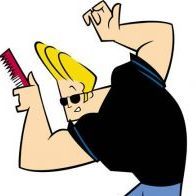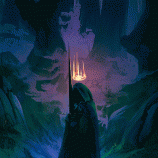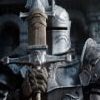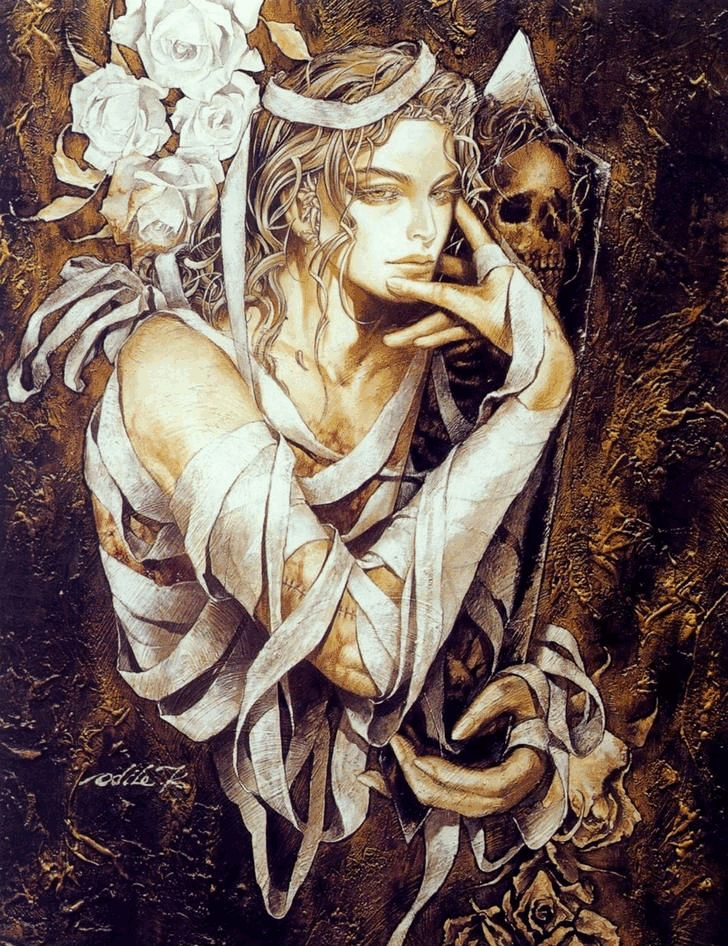-
Posts
282 -
Joined
-
Last visited
Reputation
726 Legendary
About dard
- Birthday July 21
Profile Information
-
Gender
Male
Recent Profile Visitors
3384 profile views
-

[Implemented][✓] [Amendment] Rh'thorean Necromancy
dard replied to Sorcerio's topic in Recently Outdated Lore
-

[✓] [Playable CA Race + Event Creature] Phantoms & Apparitions
dard replied to Kalehart's topic in Spectral/Undead
i pass on the torch +1 -
I’m on my phone so you’ll have to make do with a discord screenshot of my thoughts bcuz I’m too lazy to retype
- 36 replies
-
1
-
late but thanks
-
im biased but theres no need for this. 100% this will lead to the same issues that the morghuul factory had by being an open race. It got to a point where ghouls no longer felt like ghouls, so if you saw one you shrugged because they were so common and partook in generic slice of life RP.
-
The City of Rh’thor In a land far from Atlas or Arcas, bordering on the realm of maddened tales of half-drowned sailors, there exist rumors of a people of red garbs who speak a red tongue. This land grew parallel to the Descendants, a smog-ridden place known to some as the land of East-Meets-West and upon it the city of Rh'thor, where dead men broke bread with the living. The Rh’thoraens, as they first became known, followed primal beliefs that worshipped the mortal form and the cycle of life who claim came to them out of the words of a burning tree. The Land of East-Meets-West None know when living men first took to the footholds of Rh’thor, only that it developed independently of the major populaces of the Descendants. Once an interwoven continent that stretches from Yulthar in the reaches west to some unknown realm in the reaches east, the riverside land to the east was engulfed in calamity. All that was ever recorded was that the once-river was drove into the far reaches of the earth, and the nearby land with it. Where the ocean and seas once towered to the north and south of the land fated to never touch, this damned chasm filled with its own black waters anew. This gulf became known as the False Sea, and by some miracle or cruel curse, the settlements of what would become Rh’thor was spared from being swallowed along with it. From the False Sea, black rain and clouds wash over towards the west and plagued the earth with darkness that swallows the sun from the sky. All who entered the city and all who were in it were choked by the black mists—all to fall within it and be damned to rise again. The city grew as stagnant as the land, as fathers ceased to be fathers and mothers ceased to be mothers, for the dead cannot sire children. It became both bastion and prison for deadmen unwanted and the remnants of those who could not die. For years upon years, as long as the itself called itself Rh’thor, men of many creeds and tribes would come: warbands and crusaders, raiders and bandits, sorcerers and necrolytes—all would seek to claim the land in mortal folly and ambition, all to succumb to the mists. These risen men, forsaken with but a choice to join or falter alone to dust, gave cause to a legacy of warlessness across the land: “Pax Rh’thora, all who come to defeat Rh’thor become Rh’thoraen.” The False Sea Revered and cursed, worshipped and feared, the False Sea is the juxtaposition that has both created Rh’thor and inhibits it. Its cursed nature was derived the shadows of the chasm, the abyss filled with water. If a man, living or dead, drinks from the black, they perish and will not raise again. Rather than become contemptible of it, to view it as an omen, it became an object of reverence among the first native Rh’thoraens, the first dead men to settle there. For those who had become plagued with the infallible curse of undeath, death once again became a choice. And so, it became known if a Rh'thoraen walks out to shore and swims into the False Sea that they would disappear completely. This is considered a somewhat sacred method of ending one's existence, as it is believed they become one with the legendary realm far below the waters. The Fellowship in Red The Red Priest’s canon tells of far a tribe due to the outskirts at the south of Rh’thor which was spared the touch of the mists. It was here a man known as Aelvarus came across a tree that burned but did not crumble. And unto them it spoke its name once: Widukind. From this tree, the Aelvarus was granted command over stagnation and its curse and knowledge of the Redlord’s Path. Preaching of a messiatic figure who would come and save mankind from itself and Gods, for the Red Path the corruption of both Man and deity alike. These men were spared the curse of Degradation that choked the denizens of the mists, though found themselves unable to propagate. And so these stagnant men fashioned cloaks of red to don for themselves, a symbol of bloodshed that had engulfed man and would engulf it time and time again. These disciples of Widukind preached the stagnation that Rh’thoraens embraced from their heritage as a land without bloodshed due to the futility of deadmen never dying, and promoted the stagnancy that befell a city with no children as its future. Among the red men, Rh’thoraens relished the ideal of mortal empowerment and expanding the limits of the mortal form, sanctioning the use of magic that many would condemn as dark, bar one forbidden practice. These men named themselves the Red Priests, a faith militant protector of Rh’thor, and the Redlord’s faith became the dominant faith over the city Rh’thor. When Rh’thor was known for the darkness dwelling within its lands, it was the Red Priests who preached in places such as Yulthar about a land where wisemen could become wiser. After the Sable Tower was erected in the city center as a symbol of their newfound clergy, Rh’thor’s trade became its staple, a place of exotic antiquity known from the reaches of the West to the east of Yulthar. To be Rh’thoraen was to no longer feared in lands such as Yulthar, but instead its citizenry began to be seen as foreign and exotic, where strange sorcery was practiced and ancient, once-thought dead languages were spoken. The Fifthlord’s Doctrine "He shall dig His roots into the depths of the earth and purge it of its illness; and thus all Men shall be purged of their barbarous darkness and ruinous, divisive inflictions; becoming One. He shall invoke the fire of unified Man, and cast it upon the followers of Gods, and thus banish their masters from the world we walk upon. He shall take up the broken sword and forge it anew, and then lead men in a battle against the Gods that shall last half a millennium; where Light and Dark shall remain anchored as the battlefield acts as their churning border. He shall be slightest by an unknown Final Sin, where He wil call upon the name of the Demiurge before killing the Gods themselves, and thus blanketing All Things in primordial darkness; Calor Mors. And then Men will take the Light of Gods and consume it, and then stand against the Void." — The Four Fates (known as: The Advent, The Rise, The Struggle, and The Quietus). As told unto the men of Rh’thor by the rootform of Widukind, it is known that mankind has had the potential to aspire to powers beyond their plane. Mortals throughout time have aspired to reach what the Redlord had represented, only to fall short. The first known of these were the Old Lords, the founders of Xionism who stole an esoteric power from a God. For he who had burned in the oldest dark, the flames of ire would consume him. For he who had melded with the dark, he would see nothing but darkness. For he who had offered an olive branch, he became unable to be rejoiced by men. For he who had conquered life, his name be stricken from legends. One by one they had all fallen, and so to do any new prospective Redlords who allow their purpose to become their folly. The Demiurge Those who walk the Redlord’s path have come to refer to the absent, abstract concept of a Creator as the Demiurge. The theologians of the Fifth Path have long come to suggest that the being’s absence was due to man and the creation of many Gods, or perhaps just “lost” to an unseen force. As the creator of all things, he is the creator of a once unified mankind, and thus looked upon as the first Lord of Fire and Shadow. Fire, as the aspect of creation, and Shadow as its antithesis. It then stands upon the Fifth Lord to reclaim the power of a Demiurge once lost, to swallow pretenders and take up the mantle of creator to link together the primordial aspects of creation to fight the true evil — known among men by many names “Uncreation,” “Emptiness,” “Nothingness,” “the Void.” Widukind, the First Oak The Old Ones are believed to bear a kinship with mankind, as scriptures from both Xionist and Rh’thoraen alike have pointed to the idea that the Demiurge tore them from the Void and manifested flesh souls of mortals to enable them an existence over the material world. They acted as those who shaped the world itself, but it is Widukind, the First Oak and the first to be pulled from the Void that holds most reverence among the Redlord's following. Widukinds place in the world is largely regarded as something more druidic in nature. He is bound to the Cycle of life and ensures that the “Primordial Wheel” continues in both life and death. It is believed that from creatures who have come to exist with life that does not spin into death — Gods as immortals, ravenous undead who only subsume, and the artificial mind. The Lord-Who-Was-Promised It is from the words of the First Oak himself, that the one who will inherit the mantle of Demiurge is called by many names: “The Fated Fifth,” “the Redlord,” “the Lord-Who-Was-Promised,” “the Mortal God,” “the Mediator,” and “The Keeper of Fire and Shadows.” It is believed that he shall one day be born out of darkness and suffering, who will lead his people from said darkness and swallow the Gods one by one. He will unite not only fragmented men of Xion, but all of the sons of Horen, sons of Krug, sons of Malin, and sons of Urguan. He shall unite all faiths and creeds, and lead the armies against the empty consumption of the Void and its existence. The followers of the Fifth Lord believe that by adhering to virtues of Mankind will one day will lead to the fabled one to step forth from among them, and that he will inherit the powers of Fire and Shadow as the Demiurge before him, once more unifying powers of Fire and Shadow, and making him the essential Son of God. Rh’thoraen Culture Rh'thor did not have a real unified identity until Widukind came in the form of a burning tree, rather, they were once a group of tribesmen forced to coexist in eternal undeath; a collection of living and dead men that were once outcasts, explorers, heroes and remnants of forces that tried to invade, but failed. Though “native” and “ethnic” Rh’thoraens exist in rarity among the first of East-Meets-West, to be Rh’thoraen is an idea. And, as dangerous as an idea is, it is an idea as undying as its people. Much of the population dabbles in some kind of forbidden dark sorcery, but not for malicious intention, only to grasp what truly makes a man what they are. Strictly however, Rh’thoraens view necromancy as a misery, a blight, a curse, and a hex. It is common that Rh'thoraens foster much animosity among each other, if not bound together by the Fifth Lord's gospel. Apprentices often conspire against masters and lash out against them — not to kill, as they're unable to, but to brutalize their superiors to prove their greater strength and take their place. This is rare among the faithful of the Red Priests, who have a collection of elders who had been the first to witness Widukind's revelations and so direct their flock by right of age and wisdom. While Rh’thoraens draw upon a wisdom akin Xionism, however something more foreign, they reject the premise of following any of the Four Lords and their tribal sects, one day hoping for unification. They instead believe in the prophecy of a Fifth Lord to come forth of mankind’s darkness and corruption, a messianic figure who will save mankind from itself, the Gods, and the unite them against the Great Adversary, the Void. Rh’thoraen Curse The Abyss-Touched living became known as Red Priests in Rh’thor, and are considered to be apart of the population that did not need to first die to truly become a Rh'thoraen. Spiritual and bodily stagnancy made the Red Priests into men that are really neither dead or alive, but in a limbo that spares them of the sickness in the air. Any living man or woman of Rh’thor capable of entering and leaving the city without dying are those who had been cursed by the darkness of the False Sea and the stagnancy of the land. These men and women are destined to never sire children and to age outwardly at a strange pace, making themselves look more unsightly and elderly, even at their tender middle-ages. Exiles of Rh’thor Banished with their necromancer leader, Geitheros, the exiles of Rh’thor are culturally Rh’thoraen in tradition and practice with the caveat belief that they are the heralds of the Fifth Lord to come. The exiles were cast out of Rh’thoraen society for following Geitheros, exiled for using necromancy. No true Rh’thoraen, living or dead, would willingly leave their land unless given a specific task or in the event of banishment. Thus, the only Rh’thoraens to travel the lands with the descendants are the minority of exiles or their hunters. As the exiles of Rh’thor believe in the quickening of the Fifthlord’s doctrines to usher in the next Lord of Fire and Shadow, some have begun to engage in sadomasochistic practices such as self-flagellation, the replacing of the tattooing process with scars rather than ink, and the hedonistic practices of dark magic to exacerbate the “Shadows,” and so forth to come the “Flame.” Rh’thoraen Appearance The most identifiable aspect of Rh’thoraens are the full-body tattoos encasing their skin from head-to-toe. Each marking is not without purpose, for a Rh’thoraen scribes the legacy of their lives, their aspirations, lineage of family, covenants between houses, sacred scripts of the Redlord, or whatever else be of significance, across their body. This practice is done when a man or woman accepts themselves as Rh’thoraen, calling the tradition the Memento Legatum, shorthand for the full saying or “remember your legacy.” A Rh’thoraen’s greatest shame is to be flayed of their skin, a dishonor worse than death itself should they survive. The cursed folk of Rh’thor sprout white and gray hair much before any other ethnic group, many opting to shave their heads as a symbol of unity with their undying brethren, while keeping their facial hair to style as one of their few distinguishing traits. Women of Rh’thor are often warpriestesses, their heads shaved bar a single, long braid they keep with knots of red distinguishing their accolades. All Rh’thoraens opt to be either bald or maintain short, kempt hair. As some traditional Rh’thoraens tribes hail from the eastern Yulthar, older generations that once came from the now sundered west led to a stranger sense of fashion among them, akin to that of a fusion of both the East and West. Some Rh’thoraens take more to their eastern heritage more in the traditional uniforms of horseback archers, while others who have embraced the wholeness of being a Rh’thoraen don centurion plate in combat or silken tunics. Even among their differences, a Rh’thoraen will embrace their cultural unity in binding their outfit with some form of red. Spiritual leaders of Rh’thor most often wear full robes of red or grey. Most often though, only newly fledged Rh’thoraens will dress themselves in garbs of grey. Those who have distinguished themselves may “earn their blood,” being allowed to sport the traditional red that Rh’thor is known for. General Guidelines Players who want to play a Rh’thoraen character can choose between playing a cultural Rh’thoraen or an exiled Rh’thoraen. A regular descendant can convert to the Rh’thoraen culture, as being a Rh’thoraen is a set of ideas before it is a type of ethnicity. A Rh’thoraen exile can be played as a living: a human cursed with sterility and rapid physical aging, following the exile’s beliefs of the Redlord. These beings are “Abyss-touched,” allowing them to live in the city of Rh’thor without perishing and sterility. The curse offers no benefits, no additional effects in events, as well as any other downside. It is not possible to play an “original” undead Rh’thoraen unless the character is raised as an undead, such as a Ghost or Darkstalker (with permission from the Story Team in their CA). Living, mainland Rh’thoraens cannot be played, only the exiles. Playing a Rh’thoraen should constitute at least a basic knowledge of the culture and history. A player should not play a Rh’thoraen who goes against any of the major beliefs (the Fifth Path, the aesthetic, or deity worship). Resources and Citations: Necromancy Backstory with Rh’thor Yulthar Swgrclan - he laid out the initial ideas for Xionism, Rh’thor, and the Redlord’s stuff. Myself - actually writing all of this bar a few sections, fleshing out and and incorporating it with necromancy and the overall cultural aesthetic.
- 4 replies
-
19
-
but red man bad
-
bro what are you doing, just let the mob die down for two seconds u keep doing this to yourself
-
Can’t tell you for sure if your suggestion would work, I’d have to think on it. I’m simply saying why domestic magic got axed recently was because of the lack of tracking and open access. I’m not speaking for the whole LT, but I would suggest that your chances of this getting accepted probably will go up if you address the reason why it was shelved to begin with. Having domestic magic feat applications isn’t a big deal anyways. There isn’t risk involved with someone metagaming that you can mop the floor with your head as opposed to if this was a Striga CA or something.
-
no. The big issue this had was that this was untrackable and that any joe blow could learn it with a teacher because everything that exists beyond the few exceptions can have a voidal connection. have it require an accepted voidal MA and a teacher for the feat like how everything else functions.
-

[Completed][Completed] [Debate/Poll]: Holy vs. Dark Conflict
dard replied to BonesOfTheEarth's topic in Completed Debate
never had an issue with it so long as a Magic’s entire identity doesn’t revolve around countering a magic or creature type. -
Seems to be a once a year thing give or take since I’ve been around. Point is the worldbuilding lore is minimal and its for good reason, nobody likes it being thrown out the door. Xarkly did a contest for Atlas to try and give some flavor to all that, and I guess it slightly worked? Generally if I walk somewhere in this map there is nothing of significance. Don’t really want this map to be permanent either. It might be cool to recreate a version of one of the previous maps based on how it’d look following the catastrophes, like the flood in Asulon (iirc). Worldbuilding, not the actual mechanical building and placing blocks (builders are wonderful), is trash, and when you have a fantasy setting things like landmarks, previous warzones, land scars, old ruins – all these things build depth and flavor. We don’t have anything like that. Why are the ruins in the swamp by CT spooky? What’s the big deal about them? We’ll never know because writing world lore is dead when everyone knows it’ll be temporary. On the topic of mapchanging: narratively, its bad story telling to just know that “okay well, its about time for us to pack up and do our yearly move.” The refugee story has gotten old and stale. It doesn’t bring anything new to the table. Reclaiming a the motherland? Man, that’d be an awesome narrative to launch and send people off to do without it being boring refugee thing number fourteen. Don’t get me wrong, its not all on the World Team – ET and LT have handled map changes abysmally. I’d just like to see more effort go towards actually building narrative and story in regards to the World Team.
-
can we have a permanent map so that worldbuilding lore actually matters for more than a few months?
-
if it was up to me I’d let them be forever undead but it it’s a server rule I can’t break. Learned that from ghost lore. We just gonna have to pretend
-
i bet you don’t think i could possibly split lore up further, do you?





.thumb.png.3607df704f7b25555563f2f256490a23.png)





